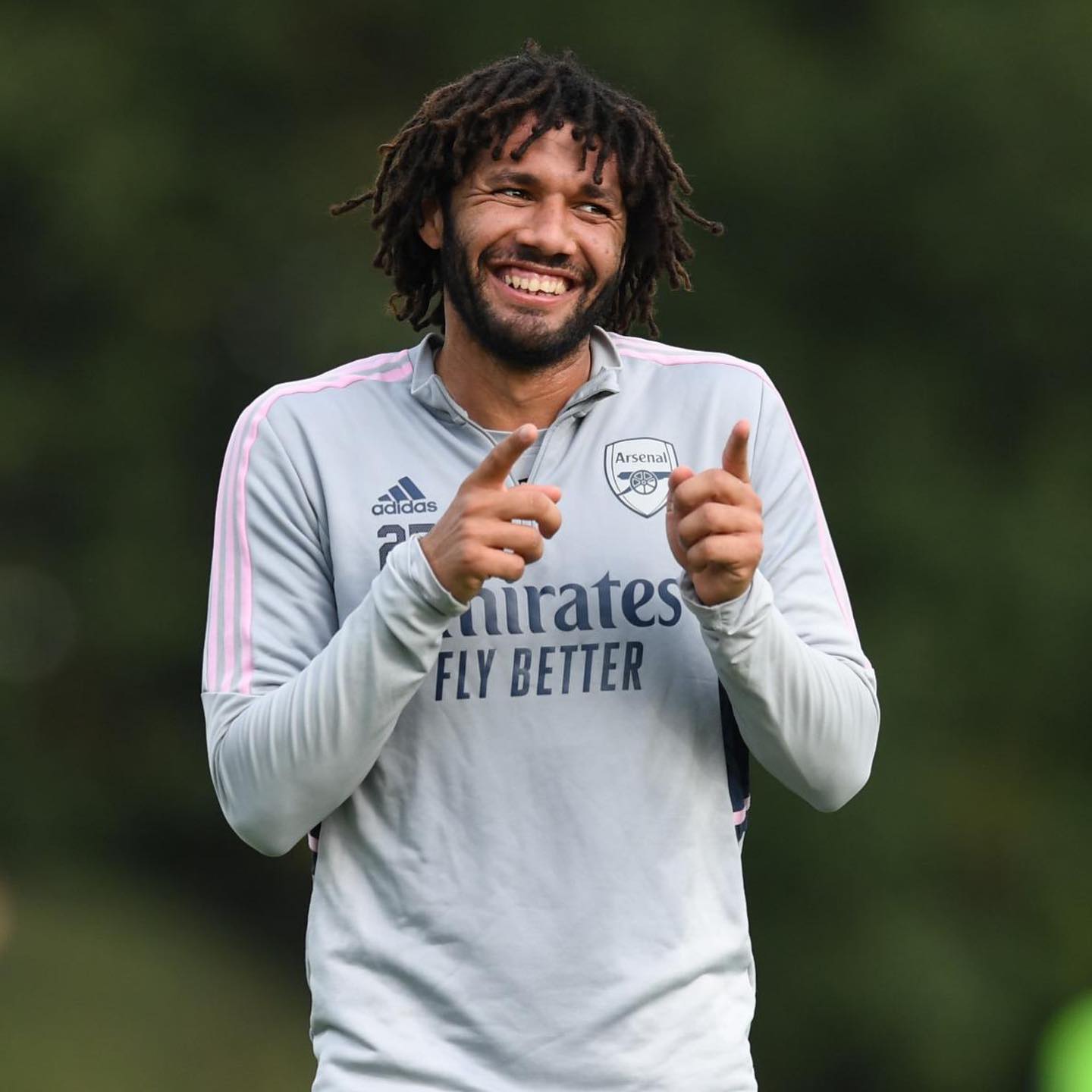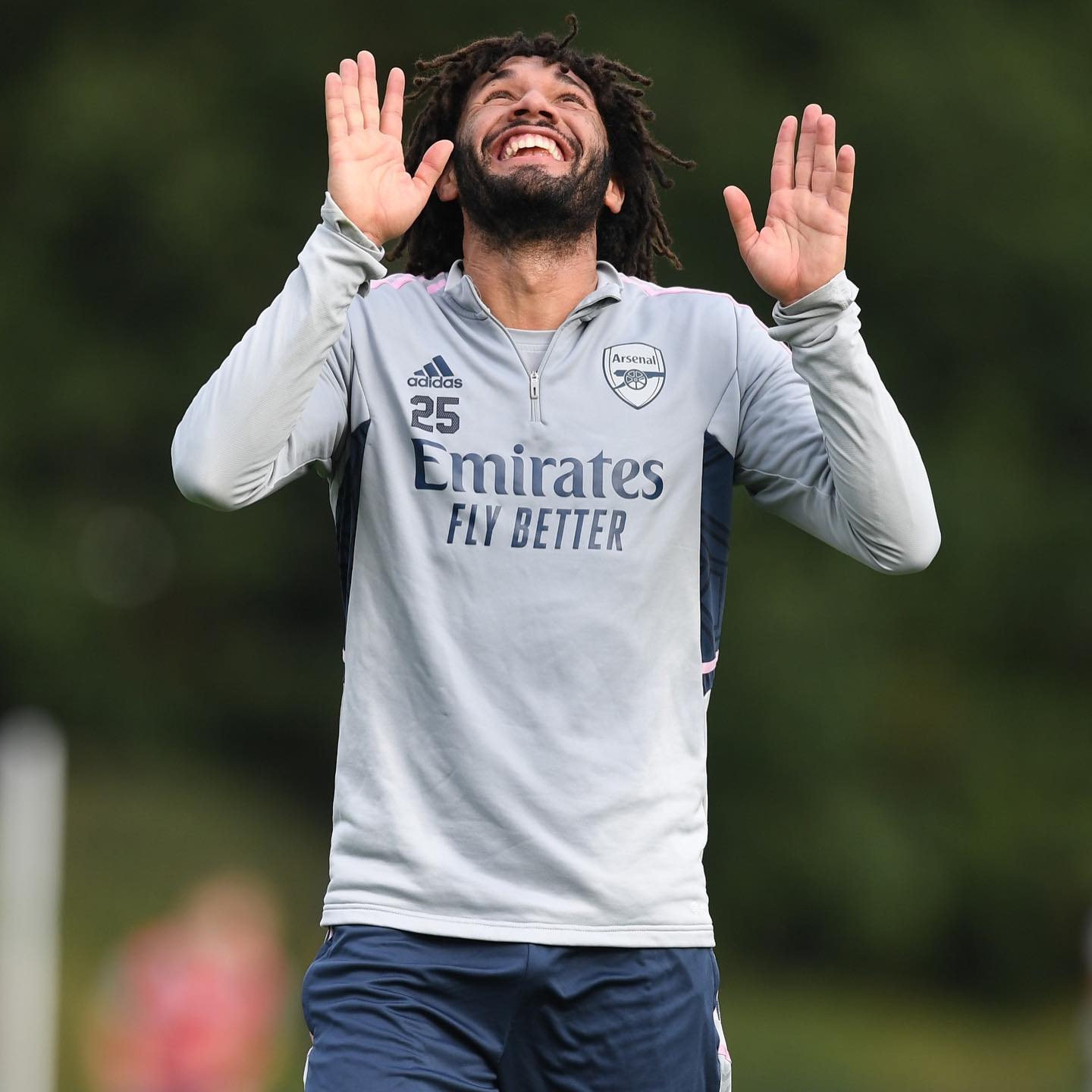[ad_1]

Mikel Arteta was asked about the possibility of extending Elneny’s contract, which is set to expire in June 2023 when he met the press ahead of Arsenal’s game at Goodison Park.
The Spanish tactician answered, “When things become difficult, I think the club has to behave in the right way. We have some really good examples of that and we have to continue to do that.”
Arteta emphasised the club’s way of treating people and their expectations for the players.
He said, “Our way of treating people [is] living together and what we expect from people is to give the maximum.”
Elneny joined Arsenal in 2016 and has been an integral part of the team, although he has struggled to secure playing time this season, making only eight appearances in all competitions.
Despite this, he made a big impact in his last appearance with the Gunners, playing the full 90 minutes and scoring in their 3-0 win over Oxford United in the FA Cup.
Arteta’s confidence in the club’s ability to do the right thing regarding Elneny’s future is a testament to the values that the club holds and their commitment to treating their players with respect.
It is clear that Arteta, as well as the club, is focused on doing what is best for the player and ensuring that he is taken care of, even in the face of adversity.
31 January 2023
Arsenal to extend Elneny’s contract following surgery
Arsenal are reportedly set to trigger Mohamed Elneny’s option to extend for 12 months after confirming the midfielder had undergone surgery on a knee injury.

Arsenal have not yet said what, specifically, is wrong with Mohamed elneny’s knee, but the lack of updates and timeframe for his return sounds very much like he has done his ACL.
All we know so far for sure is that he has had surgery.
Assuming the worst, and that he has rupture his ACL, that means a recovery period of nine months to a year and, with Elneny’s contract expiring at the end of the season, that would mean dumping him in the middle of his rehab.
That’s just not a very Arsenal thing to do.
So, they are apparently going to trigger his option and announce in the next few weeks:
Expecting Arsenal to trigger Mohamed Elneny’s option to extend his contract by a further 12 months.
Conversations under way and injury has not had an impact on the decision, which could be announced in the next week or so.
— Mark Mann-Bryans (@MarkyMBryans) January 31, 2023
The news has generated fierce debates on social media over the point of this when Arsenal have agreed a deal to bring Jorginho to the club until 2024 (with an option until 2025).
It’s hard to argue that Elneny will have little resale value after his return, so it can’t be about protecting him as an asset.
The only thing that really makes sense is Arsenal doing the decent thing by a decent, hard-working player who never complains and has ambitions of coaching at Arsenal one day.
What happens when a footballer ruptures their ACL?
When a footballer ruptures their anterior cruciate ligament (ACL), it typically results in a significant knee injury that can require surgery and a significant period of rehabilitation.
The ACL is a ligament located in the knee that helps to stabilize the joint, and a rupture can cause the knee to become unstable and unable to support the weight of the body.
Symptoms of an ACL rupture can include:
- Severe pain in the knee: Pain is usually felt at the time of injury, with some people describe a “pop” sound or sensation.
- Swelling: Swelling in the knee will appear shortly after injury and may increase in the hours following.
- Loss of range of motion: The knee may feel stiff and the player may be unable to fully straighten the leg.
- Instability: The knee may feel like it is “giving way” or buckling, making it difficult to walk or stand.
After an ACL rupture, most players will require surgery to repair or replace the damaged ligament. The surgery is usually done arthroscopically, which means it is done through small incisions with the help of a camera.
The surgery is followed by a period of rehabilitation that can last several months, during which the player will work with a physical therapist to regain strength, flexibility, and range of motion in the knee.
It’s worth noting that the recovery process can be long and challenging, and it can take up to a year or more for a player to regain their previous level of play.
Additionally, not all players are able to return to the same level of play they had before the injury.
[ad_2]
Source link












